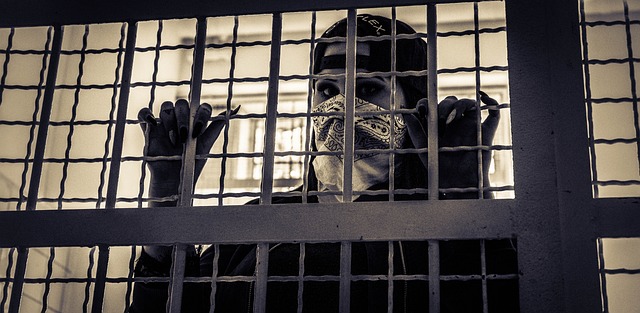DUI (driving under the influence) laws vary significantly between rural and urban areas due to disparities in law enforcement resources, leading to perceived loopholes in DUI legislation. Rural regions face challenges with lower police presence and fewer traffic stops, potentially enabling drivers to evade capture. In contrast, urban areas benefit from robust law enforcement and technology, resulting in stricter consequences. These variations create a double standard, fostering resentment in rural communities that perceive leniency while urban dwellers may view strict enforcement as overpolicing. Standardization is crucial; policymakers must address these disparities by implementing uniform BAC limits, penalties, and license suspensions to close loopholes in DUI legislation and ensure fair public safety measures across all regions.
In the vast expanse of legal territories, the interplay between rural and urban DUI laws reveals a complex landscape. While urban areas enforce stringent measures, rural regions present unique challenges, including potential loopholes in DUI legislation. This article delves into the core of these disparities, exploring key definitions, regional differences, and the impact on communities. By examining loopholes in DUI legislation, we uncover legal disparities that warrant attention, ultimately advocating for reforms to ensure consistent and just enforcement across all regions.
- Understanding DUI Laws: Key Definitions and Differences Between Rural and Urban Areas
- Rural Environments: Unique Challenges and Potential Loopholes in DUI Legislation
- Urban Settings: Stricter Enforcement and Less Room for Error in DUI Cases
- Legal Disparities: Examining the Variability of DUI Laws Across Different Jurisdictions
- Impact on Communities: Consequences and Perceived Injustices of Asymmetrical DUI Penalties
- Suggested Reforms: Bridging the Gap and Creating Consistent DUI Legislation for All Regions
Understanding DUI Laws: Key Definitions and Differences Between Rural and Urban Areas

DUI laws, also known as driving under the influence regulations, are designed to ensure road safety by preventing individuals from operating vehicles while impaired. Understanding these laws involves grasping key definitions and distinctions between rural and urban areas. In simple terms, DUI refers to a person’s inability to drive a vehicle due to intoxication or impairment caused by drugs or alcohol. The main goal of these laws is to penalize drivers who pose a risk to public safety.
One significant difference lies in the interpretation and enforcement of laws between rural and urban settings. Rural areas often have fewer law enforcement resources, which can lead to less stringent DUI patrols. This disparity might create perceived loopholes in legislation, where impaired drivers in remote regions could potentially face lesser consequences compared to their urban counterparts. Conversely, urban areas typically have well-established DUI task forces due to higher crime rates and dense populations, resulting in more proactive enforcement strategies.
Rural Environments: Unique Challenges and Potential Loopholes in DUI Legislation

Rural areas present unique challenges when it comes to enforcing and regulating DUI (Driving Under the Influence) laws. With lower population densities, limited access to public transportation, and often longer travel distances between destinations, rural drivers may face different circumstances that could potentially exploit loopholes in DUI legislation. For instance, reduced police presence and fewer traffic stops can make it harder for law enforcement to identify and deter intoxicated driving.
Additionally, rural settings might have less stringent penalties and lesser-resourced court systems, which could lead to a perception of leniency or inadequate punishment for DUI offenses. This disparity in enforcement and consequences may encourage drivers to believe that they can evade capture or receive more lenient sentences due to the perceived loopholes in rural DUI legislation. As a result, it’s crucial to ensure that these laws are consistently applied and adapted to address the specific needs and challenges of rural communities while maintaining public safety.
Urban Settings: Stricter Enforcement and Less Room for Error in DUI Cases

In urban settings, law enforcement agencies typically have more resources and a larger presence, leading to stricter DUI (driving under the influence) enforcement. This means that officers are better equipped to identify and stop potential DUI offenders, with increased patrols and advanced technology. As a result, there is generally less room for error in urban DUI cases. Any discrepancies or loopholes in local legislation are often quickly addressed due to the high volume of cases and the close scrutiny from various legal bodies.
Compared to rural areas, urban centers have more complex traffic patterns and a higher concentration of individuals, making it easier to pinpoint suspicious behavior. This can lead to quicker arrest times and more robust evidence collection methods. Consequently, defendants in urban DUI cases often face more severe consequences, as the legal system is designed to send a clear message that such offenses will not be tolerated.
Legal Disparities: Examining the Variability of DUI Laws Across Different Jurisdictions

In the vast landscape of legal disparities, the difference between rural and urban DUI laws stands out as a complex issue. Each jurisdiction crafts its own set of rules and regulations, leading to variations that can sometimes create loopholes in DUI legislation. Rural areas, characterized by lower population densities and distinct social dynamics, often have less stringent DUI laws compared to urban metropolises. This disparity is particularly evident in the penalties imposed and the resources allocated for enforcement.
For instance, while urban regions may have rigorous legal frameworks with harsher consequences, rural communities might offer more lenient sentences or alternative rehabilitation programs. These disparities can be attributed to factors such as differing cultural norms, economic constraints, and the general availability of support services. Understanding these variations is crucial, especially when navigating the complexities of cross-jurisdictional travel for those facing DUI charges.
Impact on Communities: Consequences and Perceived Injustices of Asymmetrical DUI Penalties

The impact of asymmetrical DUI (Driving Under the Influence) laws, particularly those with more lenient penalties in rural areas compared to urban centers, resonates deeply within communities across the nation. This disparity often results in perceived injustices, especially among those who believe that drunk driving should be treated uniformly regardless of location. Rural communities, known for their tight-knit bonds and unique challenges, find themselves grappling with a different set of problems when it comes to DUI enforcement. Loopholes in DUI legislation can create an unsettling double standard, where the severity of consequences appears to vary based on geographical location rather than the gravity of the offense.
Consequences for those caught driving under the influence in rural areas may be less stringent, leading to a perception that such infractions are tolerated or treated with less urgency compared to urban settings. This asymmetry can foster a sense of resentment and distrust among residents who see it as evidence of systemic biases. Conversely, urban dwellers might feel their communities bear an unfair burden of strict DUI enforcement, potentially leading to over-policing debates. Understanding these dynamics is crucial for crafting fair and consistent legislation that accounts for the distinct needs and challenges faced by both rural and urban populations alike.
Suggested Reforms: Bridging the Gap and Creating Consistent DUI Legislation for All Regions

The current disparities in DUI laws between rural and urban areas highlight critical loopholes in DUI legislation that demand attention and reform. These gaps create an uneven playing field, where individuals face varying degrees of punishment for similar offenses based solely on their location. To bridge this divide, policymakers must focus on creating consistent legislation applicable across all regions.
Suggested reforms should aim to standardize blood alcohol concentration (BAC) limits, penalties, and license suspension periods regardless of geographical setting. By doing so, we can ensure fairness and consistency in enforcement while addressing the unique challenges faced by law enforcement in rural areas. Closing these loopholes is essential to enhancing public safety across all communities, ensuring that DUI laws are effective and uniform.
In light of the above discussions, it’s evident that rural and urban areas face distinct challenges under current DUI laws, with rural regions presenting unique complexities and urban settings characterized by stringent enforcement. The existence of loopholes in rural DUI legislation and disparities across jurisdictions underscore the need for consistent and fair legal standards nationwide. By examining these disparities and implementing suggested reforms, policymakers can work towards bridging the gap, ensuring justice, and creating a more uniform approach to DUI penalties for all communities, ultimately enhancing road safety for everyone.






